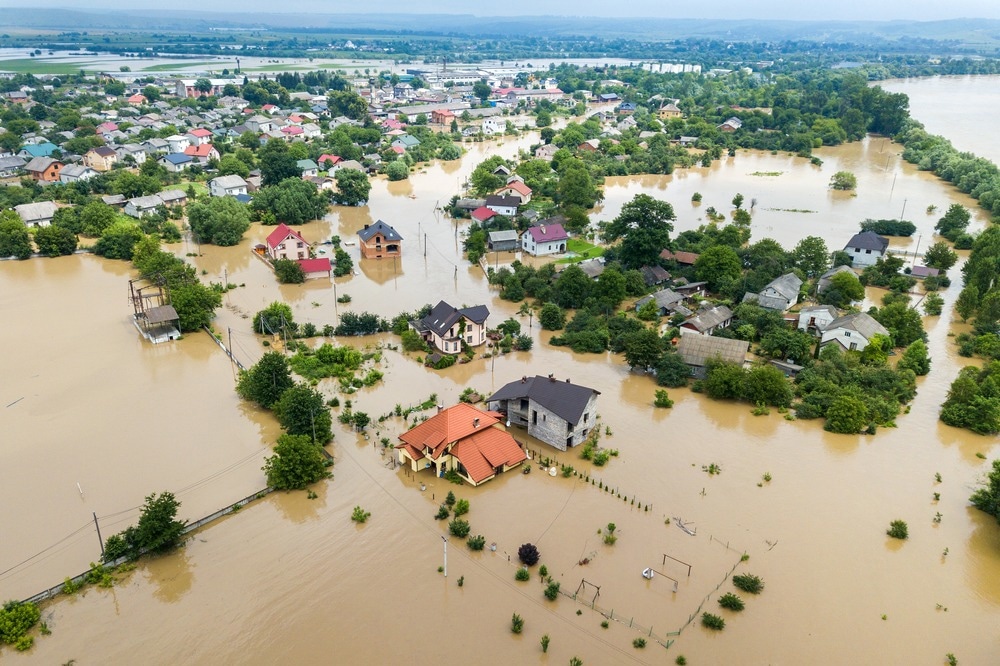Coastal communities are facing unprecedented risks due to the threat of dramatic sea level rise, but a new study shows that the people who are least fortunate will bear the burden of climate change as flooding worsens.

Image Credit: Bilanol/Shutterstock.com
While many coastal communities will experience long-term inundation and widespread intermittent flooding as a result of accelerating sea level rise, a recent paper published in Nature Communications revealed that minority populations will be disproportionately at risk of isolation when these levels rise above 4 feet.
As a result of disruptions to roads and transportation networks brought on by rising sea levels, people may become isolated and lose access to vital places like schools and emergency services.
The study also revealed that older adults and renters are more likely to experience social isolation, underscoring the growing correlation between the groups most at risk from climate change and the historical causes of current social inequality.
The first step in better characterizing these threats, according to study lead author Kelsea Best, an Assistant Professor of civil, environmental, and geodetic engineering at The Ohio State University, is to alter the way researchers assess community risk.
Currently, most studies measure community risk by determining impacts solely through direct flooding. However, focusing only on this measurement ignores more intricate consequences of sea level rise, like isolation, and exacerbates inequality in coastal areas, according to Best.
We need to re-conceptualize how we measure who is burdened by sea level rise because there are so many ways that people might be burdened before their home is flooded.
Kelsea Best, Assistant Professor, Department of Civil, Environmental and Geodetic Engineering, The Ohio State University
By 2030, rising sea levels are predicted to affect about 20 million Americans who live along the coast; however, the study points out that this figure does not fully account for the effects that global warming will have on particular groups of people.
Notably, Best and her colleagues contend that a person's inability to access vital locations such as public schools, supermarkets, fire stations, and hospitals has an adverse effect on them on par with living in a home that has been flooded and that this should be noted.
Most significantly, one of the primary causes of these enormous variations in risk is revealed by their findings: The risk of isolation for a group is closely linked to particular road networks and the locations of essential services in relation to the affected individuals’ residences.
By superimposing mean higher high water (MHHW) scenarios from the National Oceanographic and Atmospheric Administration (NOAA) over road network data from OpenStreetMap (OSM), they were able to identify these risk disparities.
The percentage of the population that would be excluded or overlooked in estimates of who would be impacted by sea level rise if researchers only counted those who suffered direct inundation was then estimated using these projections combined with data from the most recent census.
If we take a one-size-fits-all approach, or a seemingly ‘neutral’ approach to understanding who gets access to safe, affordable housing and community in a world with climate change, then we’re really just exacerbating these inequities and it’s not good enough. We have to deliberately seek to provide access to adaptation resources to groups of people who have historically been left out and therefore have fewer resources to respond in the first place.
Kelsea Best, Assistant Professor, Department of Civil, Environmental and Geodetic Engineering, The Ohio State University
The researchers demonstrated that Black populations are overrepresented after 6 feet of sea level rise and Hispanic populations are frequently overrepresented in the general population due to their risk of isolation starting at 4 feet. On the other hand, white populations become less prevalent when sea levels rise by 5 feet.
But Best’s team compared two long-term sea level rise scenarios—an intermediate scenario where global sea level rise increased by 1 m by 2100, and a high scenario where that number increased to 2 m by the same year—to find out when these disparities will start to manifest.
Alarmingly, the research found strong evidence that these isolation effects would set in by 2120 in the intermediate scenario and as early as 2090 in the high scenario.
Best says, “This timeline matters from a planning and adaptation perspective. Part of why we included the temporal piece is to say this issue would not be as much of a problem if we had urgent, aggressive mitigation. The effects of climate change are going to be further reaching and more cascading than might be directly obvious, and those effects are not going to be felt equitably. So we need to be thinking about those populations most at risk from the beginning and develop policies to support them.”
The research was funded by the Clark Distinguished Chair Endowment (given to study co-author Deb. A. Neimeier of the University of Maryland) and the National Science Foundation. Co-authors are Qian He from Rowan University, Allison C. Reilly from the University of Maryland, and Mitchell Anderson and Tom Logan from the University of Canterbury.
Journal Reference:
Best, K., et al. (2023). Demographics and risk of isolation due to sea level rise in the United States. Nature Communications. doi/s41467-023-43835-6#Abs1